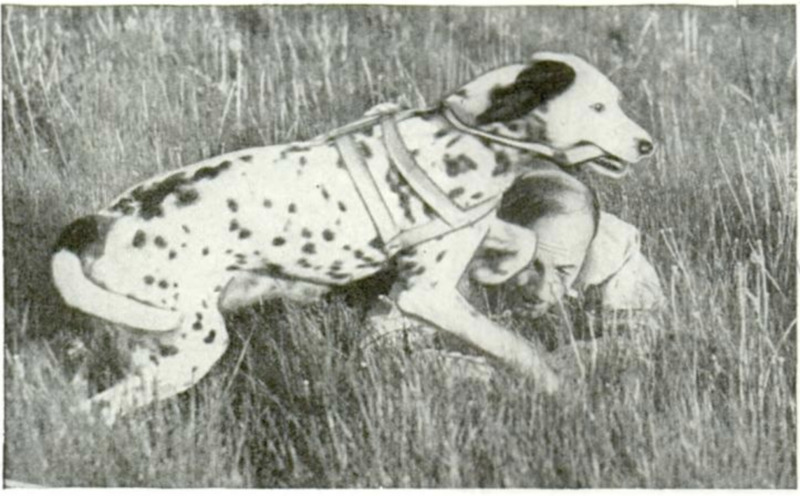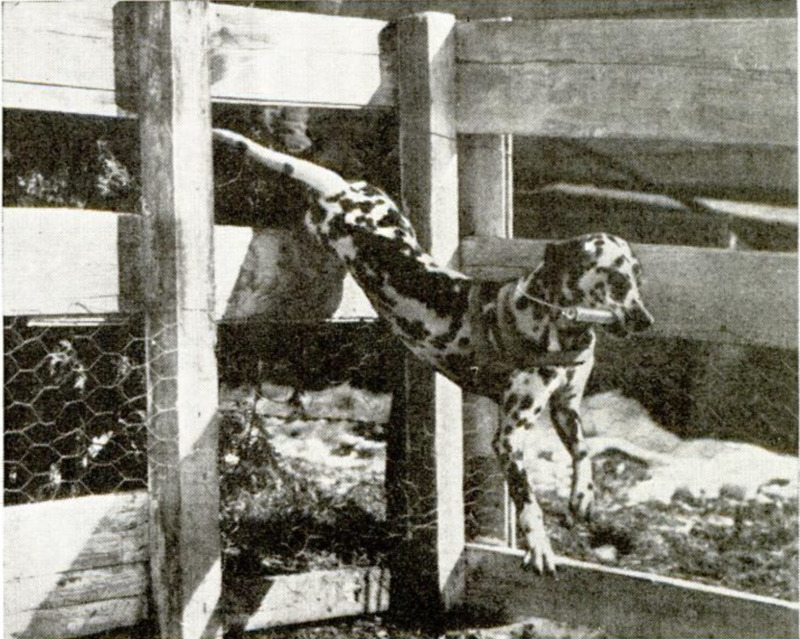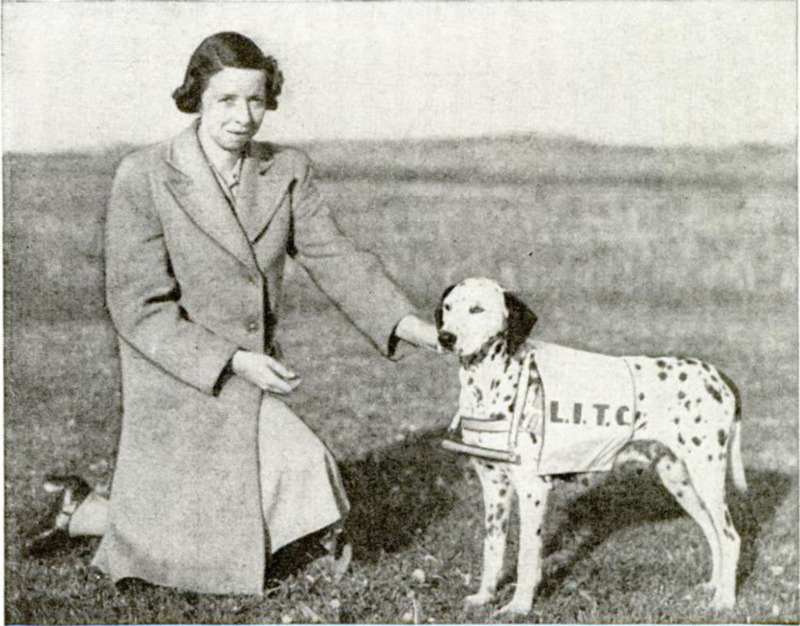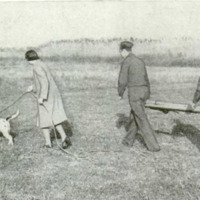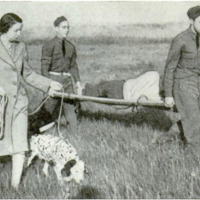Training Dogs for Defense
Contenuto
-
Titolo
-
Training Dogs for Defense
-
Article Title and/or Image Caption
-
Training Dogs for Defense
-
extracted text
-
MANY military and civilian defense duties can be performed by dogs, especially those dogs which have been trained for the obedience tests that have been a feature of dog shows for several years. Harland W. Meistrell, an air raid warden in one of the eastern states, points out that trained dogs of this type can be adapted readily to war-time uses. And Mr. Meistrell proves the point with his own dogs. There are six of them, an Irish setter, a German shepherd and four Dalmatians. Two of them have an obedience rating of “utility dogs” and the others are rated as “companion dogs” and “companion dogs, excellent.” Without great difficulty, these animals have been taught to carry messages from one point to another - equally useful to armed forces or civilian defense units, to locate persons wounded in air raids or on the battlefield and to lay telephone wire across areas in which the danger to soldiers or civilians might be too great for their use. For locating wounded men, a highly ingenious piece of training equipment is employed. It is what Mr. Meistrell calls a “bringsel,” a short batonlike stick with knobs at each end. The bringsel hangs loosely from the dog's collar in a position where the animal can reach it with its jaws. Upon find- ing a wounded man in the field, the dog simply takes the bringsel into its mouth and returns to its master. The fact that the stick no longer dangles from the collar but is held between the dog’s teeth signals rescue workers that a wounded person has been discovered. Then the dog leads a party to the man requiring attention. Formerly it was the custom to train dogs for this mission with an article of the victim’s clothing, but the animals became so eager in their work that they tore off bandages or injured the patient when a piece of clothing was difficult for the dog to retrieve. For carrying messages, the dogs are equipped with a leather carrier fastened to the collar and the animals are trained simply to run from one fixed point to another, then return. Recently duringan air raid alarm on the east coast, Mr. Meistrell sent one of his dogs to the home of a neighbor in a demonstration of message-carrying in an emergency. The dogs can lay telephone wire with minimum training. One end of the wire is fastened to the dog’s collar and the animal is directed to the spot where the wire is to be carried. As the dog drags the line, its master unwinds it from a reel until the length desired has been strung across the dangerous area. Someone at the other end takes the wire from the dog’s collar and a telephone instrument from the dog’s back, then makes the connection. Dogs are being trained also to help guard factories, airports and other places that are vital to the war program. In this work, the animals are taught to accompany watchmen on their rounds and to stand guard alone at some posts. The Army finds dogs useful for sentry duty. Owners of dogs not trained for obedience tests probably would find training their animals for such duties difficult, but there are many dogs which could be taught simple duties that might be of value on the home front. The key to such training is patience.
-
Lingua
-
eng
-
Data di rilascio
-
1942-07
-
pagine
-
88-89
-
Diritti
-
Public Domain (Google digitized)
-
Archived by
-
Enrico Saonara
